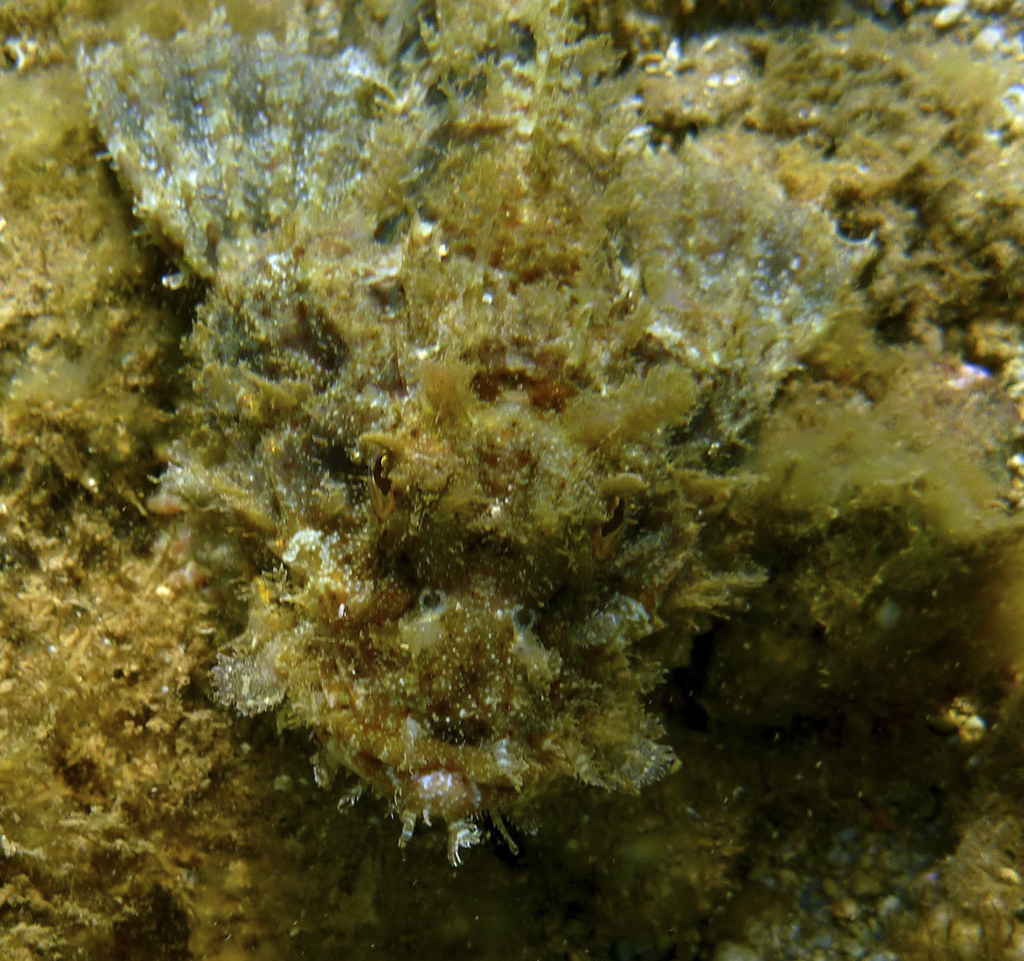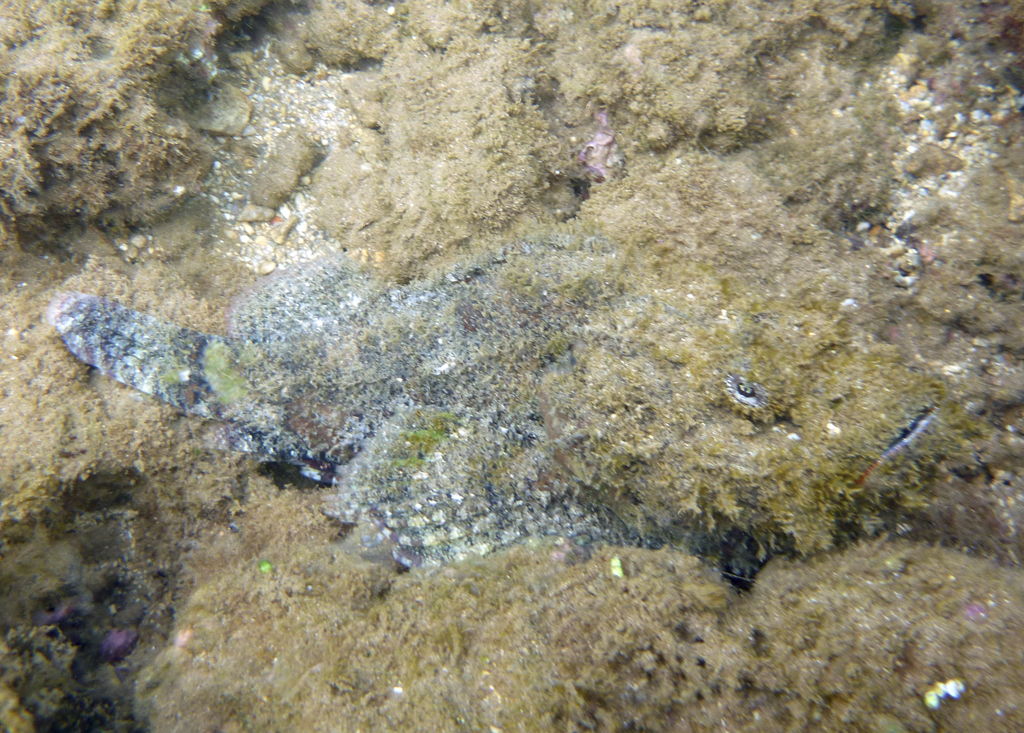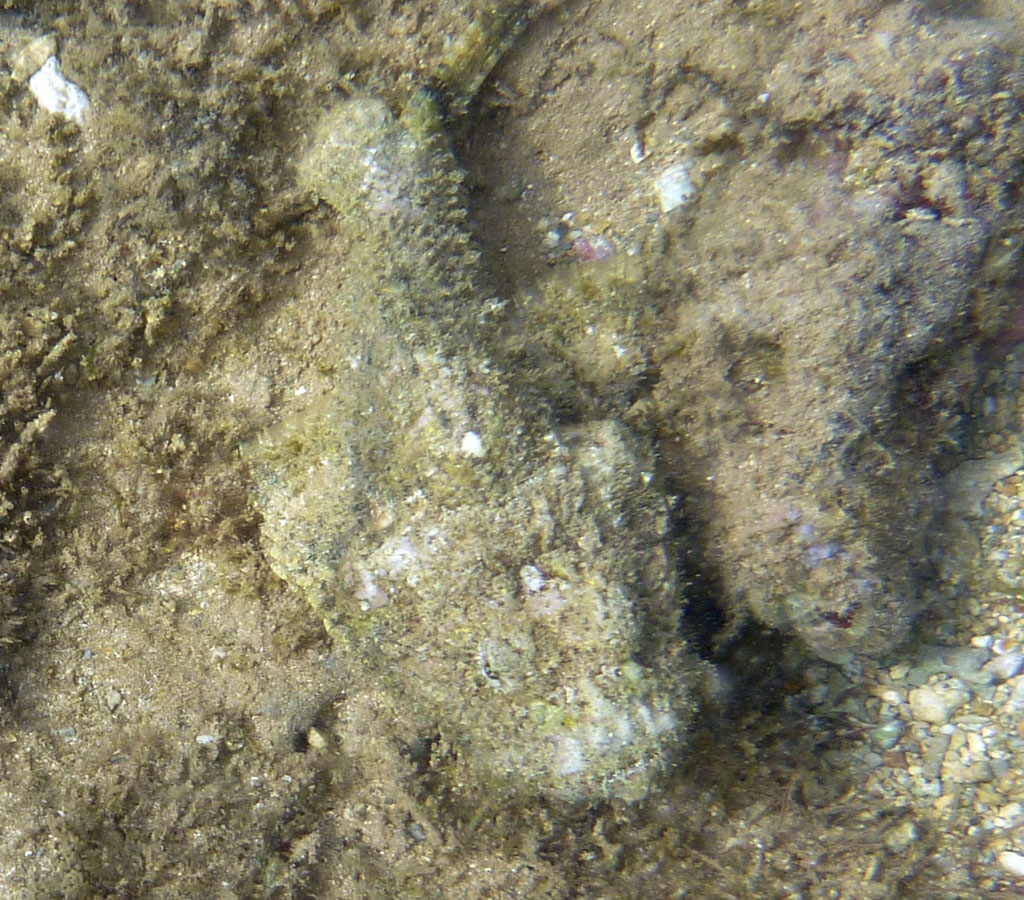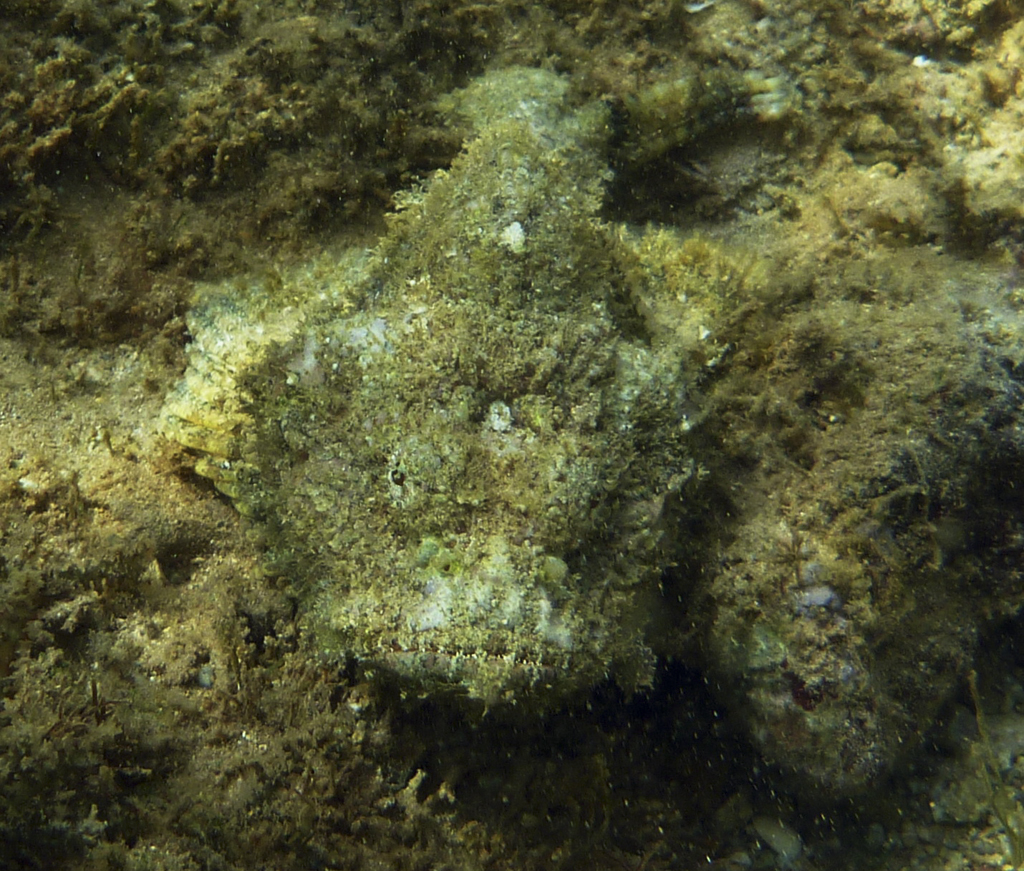Published in the Ocean Watch column, Honolulu Star-Advertiser © Susan Scott
November 12, 2012

Two eyes and a mouth are all that can be seen on a well-camouflaged devil scorpionfish. Click on image for larger view.
When I go snorkeling I sometimes get very little exercise because I stop so often to check out an animal or look at a plant. Recently I spotted a seaweed so unusual I had to dive down several times for a closer look. Finally, I identified the weird growth: an upside-down beer bottle covered with algae and swaying in the surge.
Other times I can swim for an hour or more and nothing catches my eye except the tail end of a fish dashing for cover in the reef.
But even then I know that I’m not alone. I’m sure to have passed at least one of my favorite reef animals sitting out in plain sight: the devil scorpionfish.
Devil scorpionfish don’t rush to hide because they don’t have to. The fish are close to invisible.

When sitting in the open on algae-covered rubble or silt-strewn rocks, a 12-inch-long devil scorpionfish is so well camouflaged it’s hard to make one out even with someone pointing to it.
Individuals of this species match their favorite hangout by harboring bits of seaweed and tiny invertebrates on their skin. If the fish moves, it can shed the outer layer of skin and start over.

The way I usually spot a devil scorpionfish is by catching a glimpse of orange on the mouth or fins. The fish often sits with its wide downturned lips slightly parted, like a clamshell. When the mouth is open just a crack, its inner orange corners give the fish away.
Above the lips are two bulging and very alert eyes. Devil scorpionfish ambush unsuspecting passing fish, lunging and swallowing in one lightning-fast move.

The devil scorpionfish’s pectoral fins, which the fish stands on like stubby front legs, can also blow the fish’s cover. The undersides of the fins are as bright and pretty as a butterfly’s wings. When a potential predator startles the scorpionfish into moving, it does so in a short hop, flashing its patterned red, orange and yellow fins.
This is like a warning shot, because this fish is packing. Scorpionfish, or nohu (the general name for Hawaii’s 25 scorpionfish species), have venomous spines on their back, belly and anal fins. (The most notorious of these stinging fish, the stonefish, is not found in Hawaii’s waters.)

The poisonous spines are defensive weapons only. Usually a person gets stung by accidentally stepping on, or grasping, what looks like a rock but turns out to be a fish. This is easy to do since these fish sometimes rest in only a foot or two of water.
The sting won’t kill you but it hurts a lot. The pain is greatly relieved by immersing the affected hand or foot in hot water.
I’ve never been stung, but if I step on a devil scorpionfish during one of my lazy snorkeling days, I won’t have to worry about exercise. I’ll get plenty running for my bucket of hot water.
©2012 Susan Scott